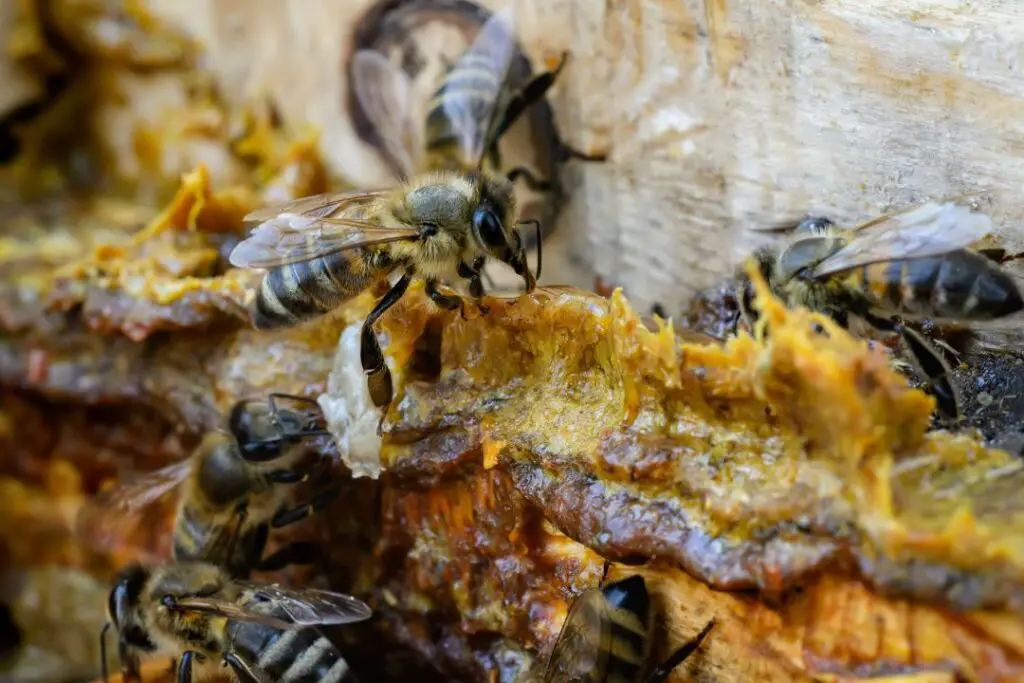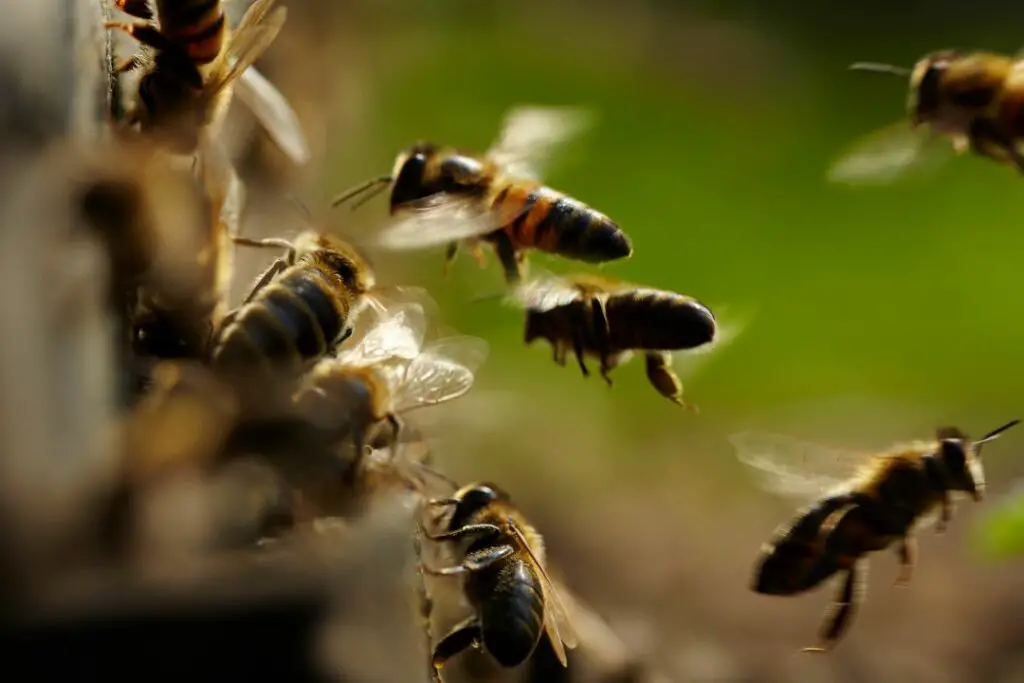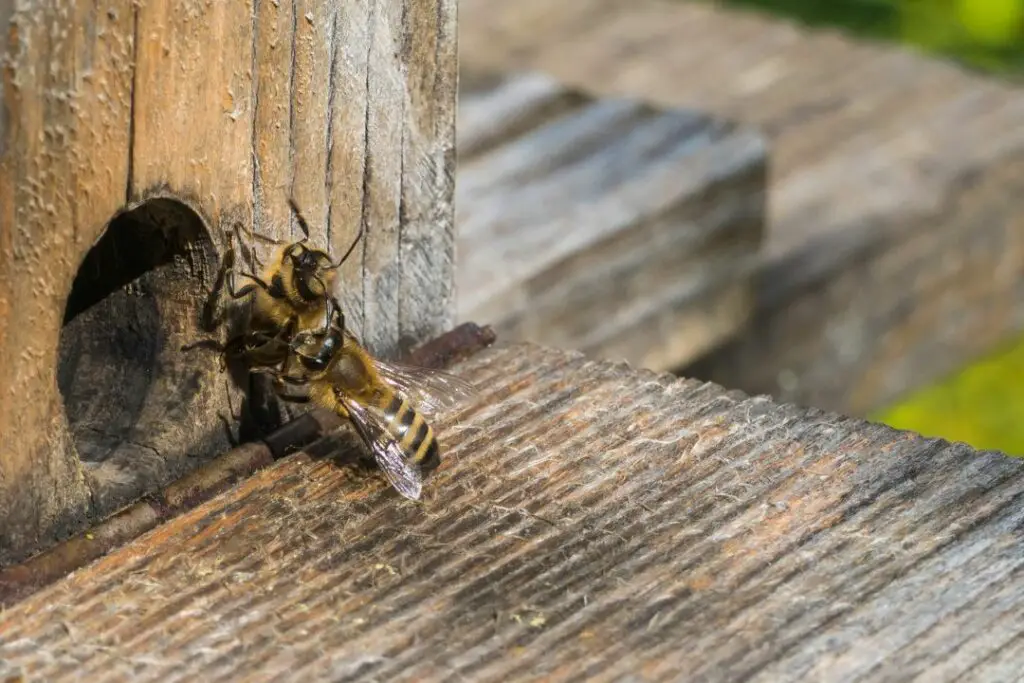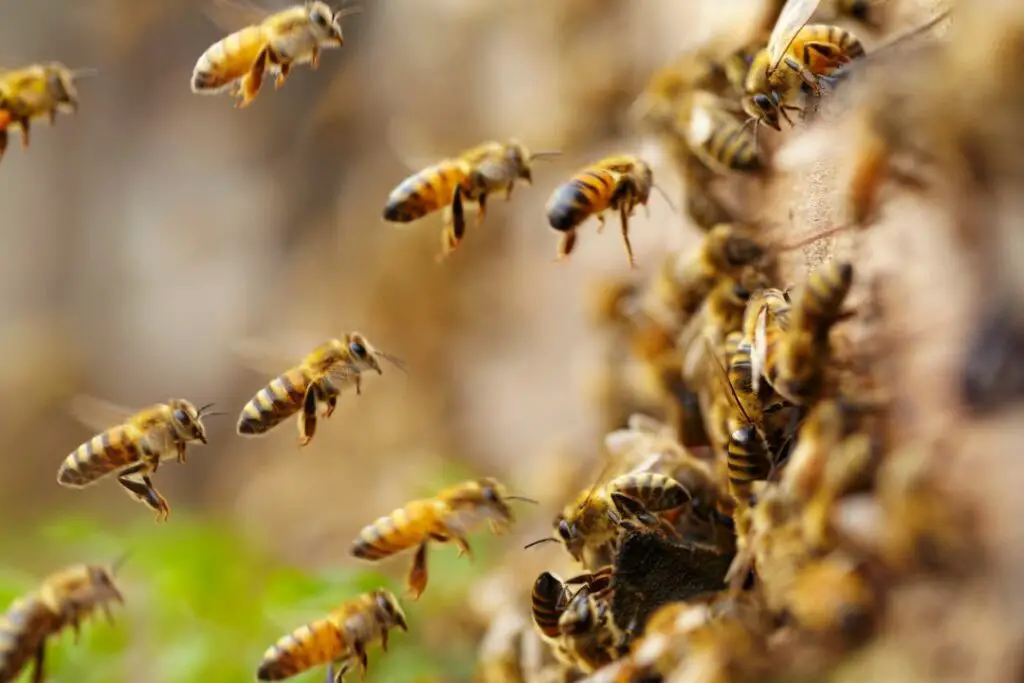If you’ve ever seen bees attack on mass, you’ve probably wondered how they organise such a terrifying display.
Well, it turns out that honey bees have developed a fantastic system to call for help and rally the hive’s inhabitants into battle.
Let’s dive into the world of bees to find out exactly how bees call for help and the amazing biology they use.
How Do Bees Call For Help?
Honey bees have a fascinating and intricate communication system, primarily driven by pheromones. These messages play a pivotal role in the hive’s day-to-day activities, but they also play a significant role in identifying danger.
Pheromones are chemical signals that bees pick up using special receptors along their antennae. In this case, we’ll focus on the alarm pheromone that bees release when they feel threatened or in danger.
Africanized honey bees are particularly sensitive to alarm pheromones, leading to unusually aggressive behaviour when communicating a threat. This bee species has been observed to respond up to two and a half times as fast as the western honey bee and chase intruders for up to a kilometre.
*Interesting fact – Only female worker honey bees will rally in defence against a threat. Male bees aren’t equipped with stingers, and a healthy queen must be defended at all costs if the colony is going to survive.

How Do Bees Release Alarm Pheromones?
Alarm pheromones are released in one of two ways:
- Via the barbed stinger at the end of the bee’s abdomen
- Via glands located on the bee’s mandibles
Each one has a very different purpose. Let’s find out more.
The sting
When a bee stings another insect or mammal, it discharges pheromones from its sting shaft as a call for help. These pheromones are a mix of over 40 chemical compounds.
When nearby bees pick up on these chemicals, it triggers an immediate behavioural response. They will quickly move towards the chemical signals on high alert.
They might sting, charge, or exhibit other protective behaviours towards intruders when they’re in this heightened state, but this defensive response ensures the safety of the hive.
The alarm signals created by stinging bees can also compound each other. This means more stings create an even more concentrated signal and will illicit an even more aggressive response and call more bees to help.
If the stinger becomes lodged in the victim, it will continue to send the
*Interesting fact – Did you know alarm pheromones released by worker bees smell like bananas? Find out more about bees’ exciting relationship with one of the world’s favourite fruits in our short read: do bees eat bananas?
The mandibles
The chemicals released by bee’s mandibles have only been studied recently, and the findings are mind-blowing.
It turns out that the chemicals released by bee’s mandibles are a very effective form of defence used by guard bees at the hive’s entrance.
It can have an anaesthetic effect on intruders or predators when released. These unfortunate victims are then carried away.
*Additional reading – You can learn more about the science of pheromones and colony defence in this study from BMC Biology.

How Do Other Bees Sense Them?
Once a bee communicates and calls for help, it will force other nearby bees to stop what they are doing immediately and wholly change their behaviour.
What happens next is a sophisticated and complex system within the bee’s brain.
- Binding to Receptor Proteins: When the alarm pheromone molecules come into contact with the bee’s antennae, they bind to specific receptor proteins. This binding initiates a series of chemical reactions within the sensory neuron.
- Signal Transmission: An electrical signal is generated once the pheromone is detected and bound to its receptor. This signal travels from the antennae to the bee’s brain.
- Brain Processing: The bee’s brain processes the signal, recognizing it as an alarm pheromone. This triggers an immediate attack response, becoming more aggressive and alert.
What Causes Bees To Call For Help?
Bees have one of the most advanced insect defence systems, but it’s only reserved for a few occasions.
Predator Threats
When a bee perceives a threat, such as a human, bird, or other animal approaching or disturbing the hive, it may release alarm pheromones. These pheromones alert other bees to the potential danger, prompting them to become more aggressive and defensive.
Learn more about bees’ deadliest predators in our guide on which animals eat bees.
Intruders in the Hive
Sometimes, pests like wasps, hornets, or even robber bees from other colonies might try to invade a hive to steal honey or prey on the bees. In such cases, bees will release alarm pheromones to rally their fellow hive members to defend their home.
*Interesting fact – Bees distinguish fellow members of the hive using pheromones. If they sniff out an intruder, they will quickly take action, raising the alarm and attacking the unwanted visitor.
Physical Harm
If a bee is squashed or injured, it might release alarm pheromones. This is particularly common when a bee stings; stinging releases these pheromones, which can attract more bees to the location and induce them to sting.

In Conclusion
Now we’ve learnt about all the amazing ways bees can send distress signals, why not learn how bees defend themselves and other hive inhabitants?
Or find out more about bees’ uncanny ability to survive watery encounters in our short read. Can bees swim?





